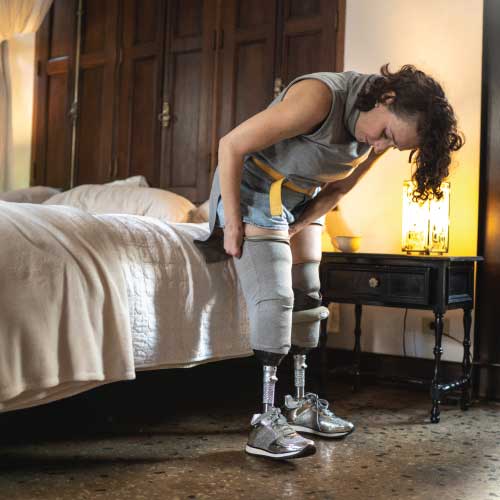Researchers Test Prosthetic Leg That Helps Users Feel Every Step
Sensory feedback in prosthetic limbs helps people move better. Researchers embedded sensors on a prosthetic leg, allowing users to feel when it flexes and contacts the ground. Regaining the ability to feel through their prosthetic limbs allowed users to walk quickly and confidently. It also decreased phantom limb pain.

Many prosthetic leg users, especially those whose amputation sites are located above the knee, find it hard to move using their prostheses. Part of the problem is that standard prosthetic legs don't provide sensory feedback, making it difficult to judge the limb's position in space and motion. This phenomenon is also known as the sense of proprioception.
Researchers from the Swiss Federal Institute of Technology in Zürich, Switzerland, put sensors on the sole and inside the knee of a prosthetic leg. These sensors were then connected to the nerves on the thigh through wires. Two men tested these altered prosthetic limbs.
For the first month of the experiment, the two volunteers went through different situations that would stimulate the nerves on their thighs in the hopes of generating the most realistic sensations. The testers described feeling "close to lifelike" sensations.
They also tested the altered prosthetic legs on an outdoor track. Both walked up to six meters per minute faster with sensory feedback than without feedback. Both men also reported feeling more confident walking in the sensory-embedded artificial limb.
After three months of testing the prosthetic legs, one of the volunteers reported that their phantom limb pain completely vanished while the other man said the pain decreased by 80%. For many prosthetic users who suffer from phantom limb pain, this development is very interesting.
The researchers who carried out the tests are the same team behind the prosthetic arm Ability Hand, which also allows users to feel from the fingertips.










































































